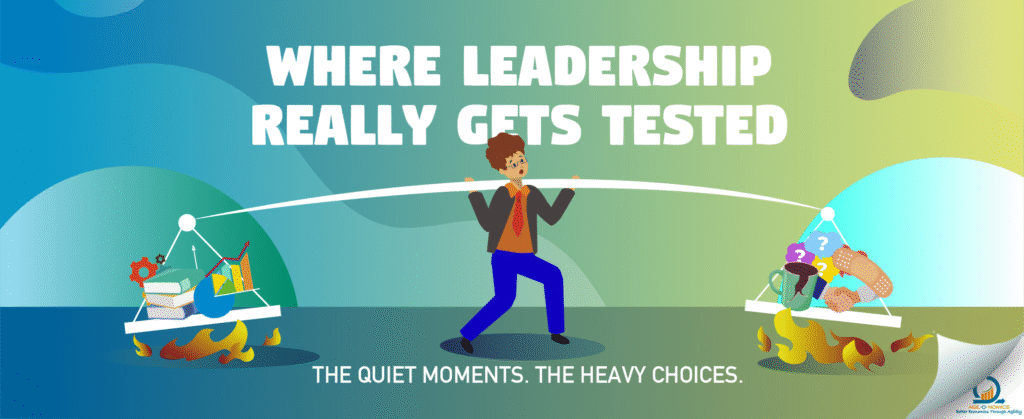
Leadership often looks glamorous from the outside—vision statements, big decisions, high-profile wins. But ask those who practice it every day, and a different picture will emerge. Leadership can not be defined by the stage moments alone; it needs to show up in the quiet, often overlooked situations that shape how teams work together.
How you respond to conflict.
How you handle mistakes.
How you create clarity in the middle of uncertainty.
These are the moments that ripple through an organization. And they are the moments where leadership feels the heaviest.
The Human Side of Supercharging Teams
Every leader wants a team that feels energized and capable of achieving great things. Yet “supercharging” a team is not merely about motivational speeches or pushing for higher velocity. It should start with the smaller actions that build trust and momentum over time.
- Owning mistakes instead of deflecting blame sets the tone for psychological safety.
- Addressing conflict directly prevents the silent erosion of trust.
- Making time for people’s growth signals that development matters as much as delivery.
When leaders treat these moments with care, teams respond with openness, resilience, and commitment. That is how performance is inspired—not through pressure, but through character consistently applied.
Why Process Matters More Than Style

Leadership is often framed as a personal trait: charisma, confidence, decisiveness. While these qualities help, they are not enough to sustain teams over the long run. What keeps teams healthy and productive is a process that works for them.
A process should not be about bureaucracy or strict control. It is a repeatable rhythm that supports both delivery and connection. Leaders who design environments where collaboration flows smoothly reduce friction and free people to focus on meaningful work.
Some hallmarks of a process that works include:
- Clear priorities so teams know what matters most.
- Regular cadences for reflection that actually results in action.
- Space for complete conversations vs. fragmented discussions cut short by the clock.
When leaders shape processes that respect people’s time and attention, the result is stronger alignment, higher engagement, and fewer recurring frustrations. Process, done right, is not a limiter—it is an enabler.
The Role of Technology and Tools
No discussion of modern leadership is complete without acknowledging the weight of technology. Tools shape how people work, communicate, and collaborate. They can either amplify leadership or undermine it.
For example:
1. dashboards and reporting tools give leaders visibility, but if used poorly, they can reduce people to numbers.
2. Collaboration platforms connect teams, but without clarity, they can multiply noise instead of focus. The key is not the tool itself but how leadership uses it.
Leaders who use technology to extend conversations, capture insights, and make decisions transparent help their teams work smarter. Leaders who use tools as surveillance mechanisms or blunt metrics damage trust and motivation.
Technology should never replace leadership—it should strengthen it. When used thoughtfully, tools make it easier for leaders to provide clarity, for teams to collaborate, and for organizations to adapt quickly.
The Heaviest Part of Leadership
So where does leadership feel the heaviest?
Often in the tension between
- speed and depth,
- pressure and care,
- tools and humanity.
Leaders are pulled in many directions—deliver results, empower teams, adopt new technologies, refine processes.
The weight comes from knowing that every decision sets a tone. Choosing to prioritize numbers over people, or process over conversation, may seem small in the moment but has long-term effects on culture.
The leaders who carry this weight well are not perfect. They are the ones who remain intentional. They know that leadership is not about avoiding mistakes but about how they respond when mistakes inevitably happen.
They know that clarity is not about having all the answers but about providing direction when the path is unclear. And they know that the role of leadership is not to be everywhere, but to create conditions where teams can succeed together.
A Different Kind of Measure

Leadership will always be tested—not in the grand moments but in the everyday decisions that shape how people feel and work.
When teams feel supercharged, when processes reduce friction instead of adding it, and when technology supports rather than distracts, leadership is working as it should.
And if those pieces are missing, no amount of vision or charisma can fill the gap.
Because in the end, the true test of leadership is simple: does it help people do their best work?

